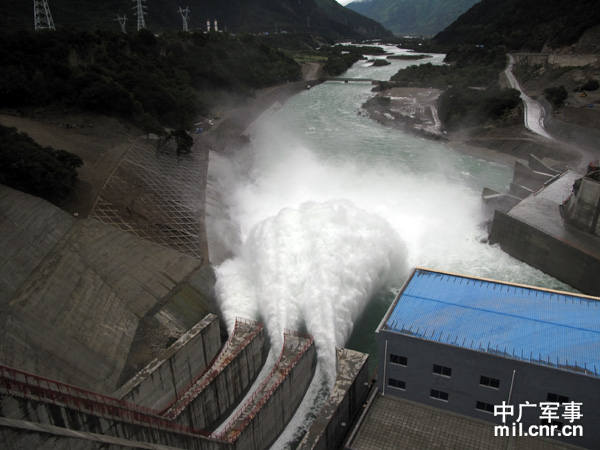Tibet’s outward hydropower transmission capacity reaches 330 million kwh

Up to now, Tibet has transmitted totally 330 million kwh of hydropower outwards, with the maximum outward power transmission capacity reaching 300,000 kw. Both are all-time high, Tibet Daily reported.
On Jun. 1, 2015, the Central Tibet Power Grid successfully transmitted power to Qinghai via the Qinghai-Tibet DC Networking Project after the advent of rainy season. This marks the beginning of Tibet’s clean energy to participate in the regional balance of power supply in northwestern China and the optimal adjustment of the national energy structure. The Qinghai-Tibet DC Networking Project has also better played a significant role in adjusting the structural contradiction of the power supply in Tibet featuring "surplus in rainy season but shortage in dry season".
The 12th Five-Year Program Period (2011-2015) has witnessed the rapid development of the power grid in Tibet. A number of projects have been completed and put into operation in succession, including the Qinghai-Tibet DC Networking Project, the Sichuan-Tibet Power Grid, the project of electric power construction in the rural areas with no access to electricity and upgrading of the rural power grid, the Central Tibet Power Grid Project, the project of outward delivery of the electric source in the middle reaches of the Yarlung Zangbo River, and the outward power transmission of a large-scale grid-connected photovoltaic power plant. The urban power grid construction and renovation project and the Qamdo power grid project will be put into operation at the end of the year. The current power supply situation is the best in the history of Tibet.
By the end of the 13th Five-Year Plan Period (2016-2020), Tibet is expected to transmit 1.2 million kilowatts of power to the Northwestern power grid during the rainy reason, with an annual outward power transmission capacity of 3.4 billion kwh and a reduction of carbon dioxide emissions by 3.4 million tons. This will make a positive contribution to the optimal adjustment of the national energy structure and air pollution control.
Your Comment
Name E-mailRelated News
-
;
-
-
Tibet sends hydropower to Qinghai, reducing CO2 emissions by 97,700 tons
The surplus in Tibet central electric grid and hydropower delivery has normalized.
-
-
-
Fishway of Tibet's largest hydropower station starts operation
A fish started passing up the world's highest fish ladder at Zam Hydropower Station, Tibet's largest, on Thursday.
-
-
-

-
China responds to Zam Hydropower Station’s contingent impact
Hua Chunying, spokesperson of Chinese Foreign Ministry, answered a reporter’s question regarding India’s concerns over the contingent impact of Zam Hydropower Station.
-











